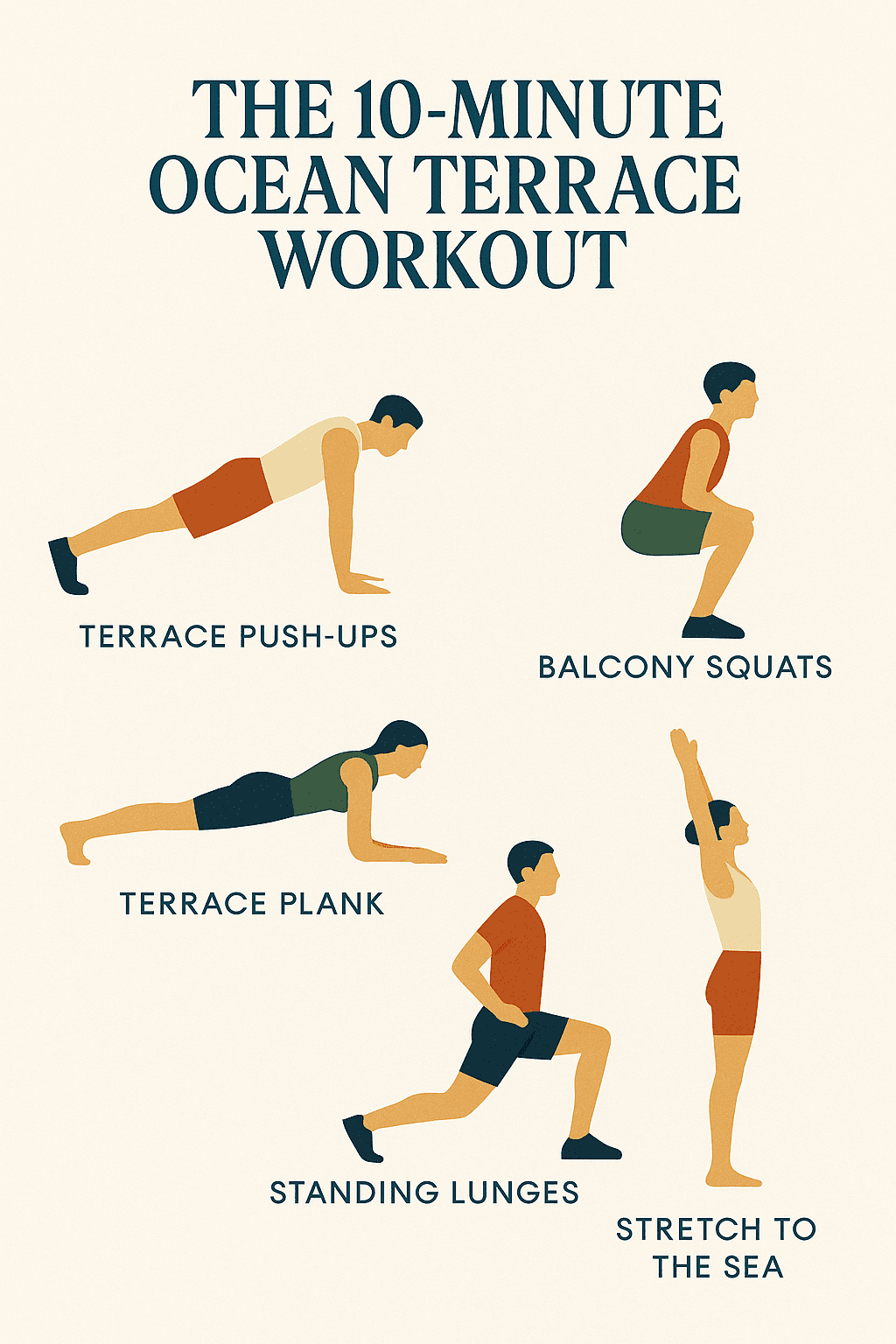A daily ritual for clarity, posture, and quiet strength.
No timer. No mirror. No playlist.
Just the sound of your own breath, and a body remembering how it was designed to move.
This is a 15-minute practice to re-center the spine, open the hips, strengthen the core, and reintroduce calm into your muscles. You can do it in silence. You can do it in linen. But do it like you mean it.
1. Terrace Push-Ups (3 minutes)
Do 3 slow sets of 8–10 reps. Pause between sets. Focus on control — not exhaustion. Lower slowly, hold just above the stone, then rise with full awareness of the front body.
Used for centuries in Persian wrestling schools and Japanese sumo rituals — the humble push-up is a test of silent integrity.
Physiology: Chest, shoulders, triceps, scapular control. Enhances upper-body resilience and core linkage.
2. Mediterranean Squats (3 minutes)
Squat to full depth — knees aligned, heels grounded. Add a 2-second pause at the bottom of each rep. Perform 3 sets of 10. In between, shake out the legs. Breathe into your pelvis.
The squat is found in longevity zones from Ikaria to Okinawa — not as training, but as living posture.
Physiology: Quads, glutes, hamstrings. Boosts hip mobility, leg strength, metabolic regulation.
3. Plank of the Desert Builders (3 minutes)
Hold for 60 seconds. Rest 30. Then repeat. During holds, focus your gaze softly forward. Keep your breath low, slow, wide. Finish with 30 seconds of forearm plank hip rocks — shifting gently forward and back.
Stillness teaches you more than strain. It tests your breath under tension — your ability to be stable in discomfort.
Physiology: Core stabilizers, spine support, vagus nerve activation.
4. Lunge Like You've Walked Cities (3 minutes)
Step forward. Lower. Pause. Return. Alternate legs for 10 reps per side. Between sets, try a twisting lunge: pause at the bottom and rotate gently toward the front leg.
The lunge represents transit — the movement between identities, roles, seasons. Train the transitions, not just the peaks.
Physiology: Legs, glutes, balance, spinal rotation. Rebuilds coordination and mental-body connection.
5. Stretch to the Sea (2 minutes)
Five rounds of deep breath-to-movement stretches. Inhale: reach to the sky. Exhale: fold. On the last round, hold the forward fold and let the breath pool in your lower spine.
Fishermen in Sicily stretch this way before setting sail. It's more ceremony than movement — a way of reminding the body that it's fluid, not fixed.
Physiology: Breathwork, spinal elongation, fascial release.
6. The Still Spine (1 minute)
Sit. Cross-legged or on a cushion. Let the breath settle. Keep your spine upright, like it's being held by a silk string from above. Close your eyes. Count 10 full breaths.
Stillness is the sixth movement. The one you'll carry all day.
Physiology: Parasympathetic reset. Reduces stress load, reestablishes postural awareness, recenters cognition.

The complete 15-minute ocean terrace routine
Why It Works
15 minutes: approachable, repeatable, impossible to excuse.
6 movements: cover the essentials — push, squat, core, balance, flexibility, stillness.
Everywhere: requires only your body and a little space.
Done daily, it's not about chasing a six-pack or “burning calories.” It's about building a quiet strength that carries you through everything else — the kind of wellness that looks like sunlight in motion.
Final Word: Movement as Ceremony
You can do it anywhere.
A hotel balcony. A sunlit hallway. A stone terrace over the Aegean.
It isn't a workout.
It's a return.
To grace. To form. To breath.
To you.
Fifteen minutes. Six movements.
One body — reorganized.



